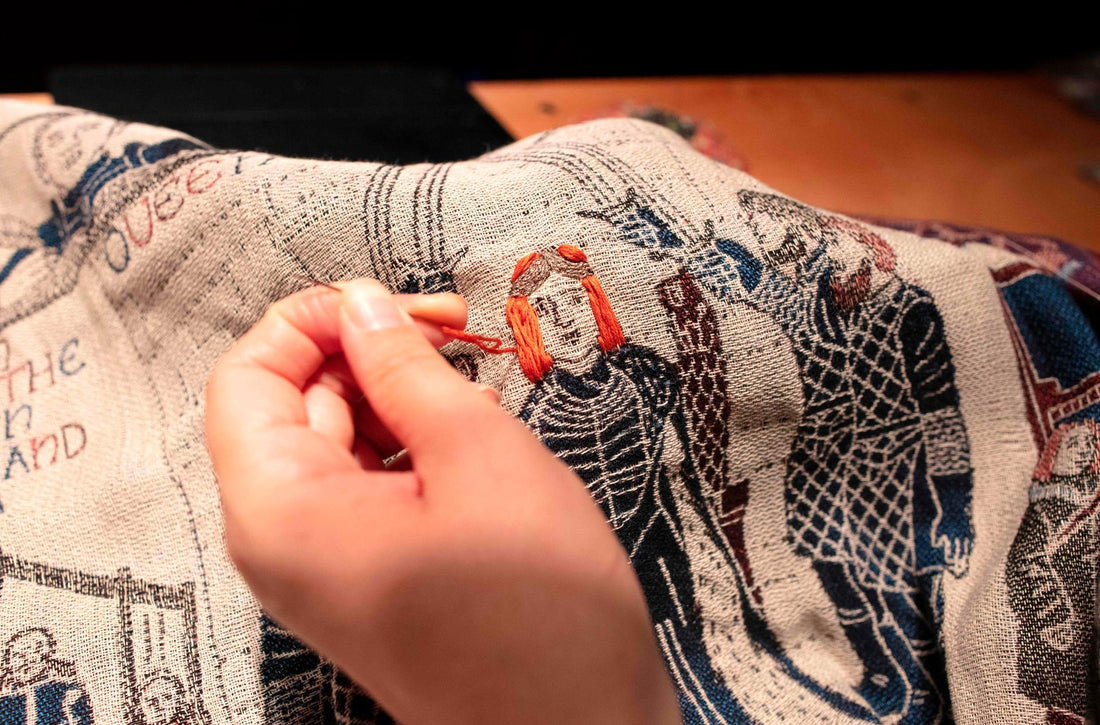
AN EPIC YARN

Image: Game of Thrones Tapestry – Bayeux © Sabina Lorkin 2019
Within living memory of the events leading up to and culminating in the Battle of Hastings, Anglo-Saxon embroiders traced the bloody narrative of the Norman conquest in 1066 using wool yarn sewn onto 70 metres of linen cloth: an epic feat known across the world as the Bayeux Tapestry. Now, almost 1000 years after its creation, a new epic tale—and one almost as grisly—joins its spiritual forebear in Bayeux at the Hôtel du Doyen.
On loan from the Ulster Museum in Belfast, the Game of Thrones Tapestry tells the complete and epic narrative of the eponymous HBO television show, depicting key scenes from each episode in the illustrative style of the Bayeux tapestry which complements the celebrated medieval realism of the series. Over 77 hours’ worth of storytelling were condensed into 77 metres of tapestry, making it just a few metres longer than its predecessor.

Image: Embroider working on Game of Thrones Tapestry - © The National, AFP
Commissioned by Tourism Ireland to celebrate how the filming and production of the TV series has become part of the fabric of Northern Ireland’s heritage and culture—bolstering creative industries in the area—the tapestry also harks back to Northern Irelands rich legacy of textile and linen manufacture. The detailed panels depicting key scenes that many viewers will recognise were painstakingly hand-woven and brought to life by expert weavers using Northern Irish linen (sourced from one of the country’s last surviving linen mills) as well as fabrics and textiles used for costumes in the show. Once woven, volunteer hand embroiderers from textile guilds across Northern Ireland came together to meticulously add final flourishes of embroidery—from the silvery hair of Daenerys Targaryen to the glint of a molten gold crown.

Image: Game of Thrones Tapestry (detail) – Ulster Museum, © Losing the Plot Blog post, 05/27/2018
The full length of the tapestry has now been digitised and is available to view in its entirety, along with further details and information, on the Tourism Ireland website. It will be displayed at the Hôtel du Doyen until 31st December 2019.
